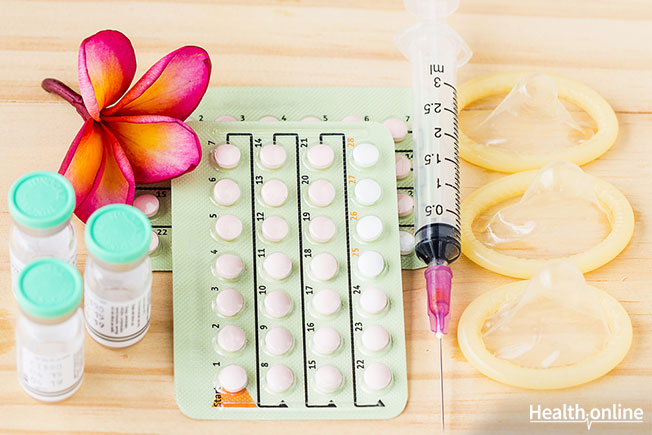
Different Birth Control Methods
Contraception has been in practice since ancient times. It birthed out of the necessity to avoid unintended and/or unplanned pregnancy. Though newer technologies have changed the way birth control methods are practiced, yet the underlying principles have remained the same. The need for contraception has also remained consistent- to enjoy sex without getting pregnant.
Contraception can be planned or can be taken as an emergency measure. It can be reversible or irreversible, long-term or short term. The widely used barrier method of contraception acts by preventing the sperms from meeting the egg. There also are hormonal preparations that act on the female reproductive system hindering the release of the ovum from the ovaries. Intrauterine Devices (IUD) prevent fertilization while the long-term irreversible solution is offered by sterilization.
But what method to use depends on various factors like age, marital status, education of the beneficiaries, socioeconomic status, hormonal status, etc. Having a number of options to choose from, it is more of a cafeteria approach where you are given the options to choose from a menu card. In this article, we shall see what the various methods of contraception are and what would be the most suitable profile to use them.
- Barrier method: The most effective method which can be used by most of the people is the barrier method. The mechanism is very simple – prevent the contact between sperms and ovum. The important feature of this method is that it requires less intelligence to use and is affordable by everyone. Male condoms, female condoms, diaphragm and cervical cap, fall in this category.
- Male condoms: The most widely used and advertised method of birth control is the male condom. Widely popular among people in the fertile age group largely due to the condom social marketing programs, it is cheap, user-friendly and highly effective against sexually transmitted infections including HIV/AIDS. It is usually made up of latex though polyurethane and lambskin condoms are also available. It can be used only once and can be used only during the time of intercourse. It works better with a lubricant.
- Female condoms: The feminine counterpart of male condoms, it is less used due to the cost of the condom in addition to difficulty in placing the condom inside the female genital tract. But the effectiveness of female condoms is as high as 95%. In spite of this fact, it is not a very popular method of contraception among women.
- Diaphragm: It is a birth control method where the diaphragm coated with a spermicide is kept inside the vagina to prevent the sperms from entering the uterus. It has to be kept inside before six hours of having intercourse and has to be taken out after a day (24 hours) for washing. Reusability is a desirable feature of the diaphragm. But it offers no protection against sexually transmitted infections and requires a healthcare expert to teach you how to use it.
- Cervical cap: Infection of the urinary bladder called as cystitis due to the use of diaphragm has warranted a cervical cap because a cervical cap does not come into contact with the vaginal wall and covers only the cervix. Similar to the diaphragm in function and uses albeit smaller, it can remain up to two days (48 hours) after sex.
The effectiveness with cervical cap and diaphragm is lesser than the male condoms and with no conclusive evidence of protection against sexually transmitted infections including HIV/AIDS. They are also comparatively not very popular.
Hormonal contraceptives:
Next in line, and very popular among females, is the hormonal preparations commonly known as the contraceptive pill. If properly adhered to the prescribed guidelines of administration of the pill, the effectiveness can be as high as 99%. Although, this pill does not offer protection against STIs. Contraceptive pills can be combined (estrogen and progestin) or a mini-pill containing only progestin. A doctor’s prescription is required for procuring these pills. The pill has to be taken regularly and at the appropriate time. For mini-pills, you have to consume the pill at the same time every day and should not let it delay for more than three hours. A missed pill reduces the effectiveness of the pill.
Intrauterine Devices or IUDs:
A long term solution and a very effective option for married couples is the IUD. The IUDs are made up of either copper or release hormones to hinder fertilization. The effectiveness is above 99% albeit it offers no solace against STIs. Hormonal IUD can be kept inside the female genital tract for up to five years while copper IUD can be retained up to 10 years. It has to be inserted only by a registered medical practitioner with experience in female sexual and reproductive health. It requires regular follow-up in the first few weeks to ensure that the IUD is in place and is devoid of infection.
Sterilization:
The final resort to contraception and permanent solution is sterilization. This is effective in both males and females. In males, it is vasectomy, where the tracks that carry sperms are cut and tied off. In females, the fallopian tubes are ligated (surgical sterilization) or coils are placed inside the tubes (non-surgical sterilization). Though there are sporadic cases of recanalization, it is very effective.
As emphasized earlier, the choice of contraception lies on the user – whether they are looking for long term or short term options, their age, marital status, affordability, education, etc. It is essential to understand the pros and cons of any method of sterilization before adopting it.




